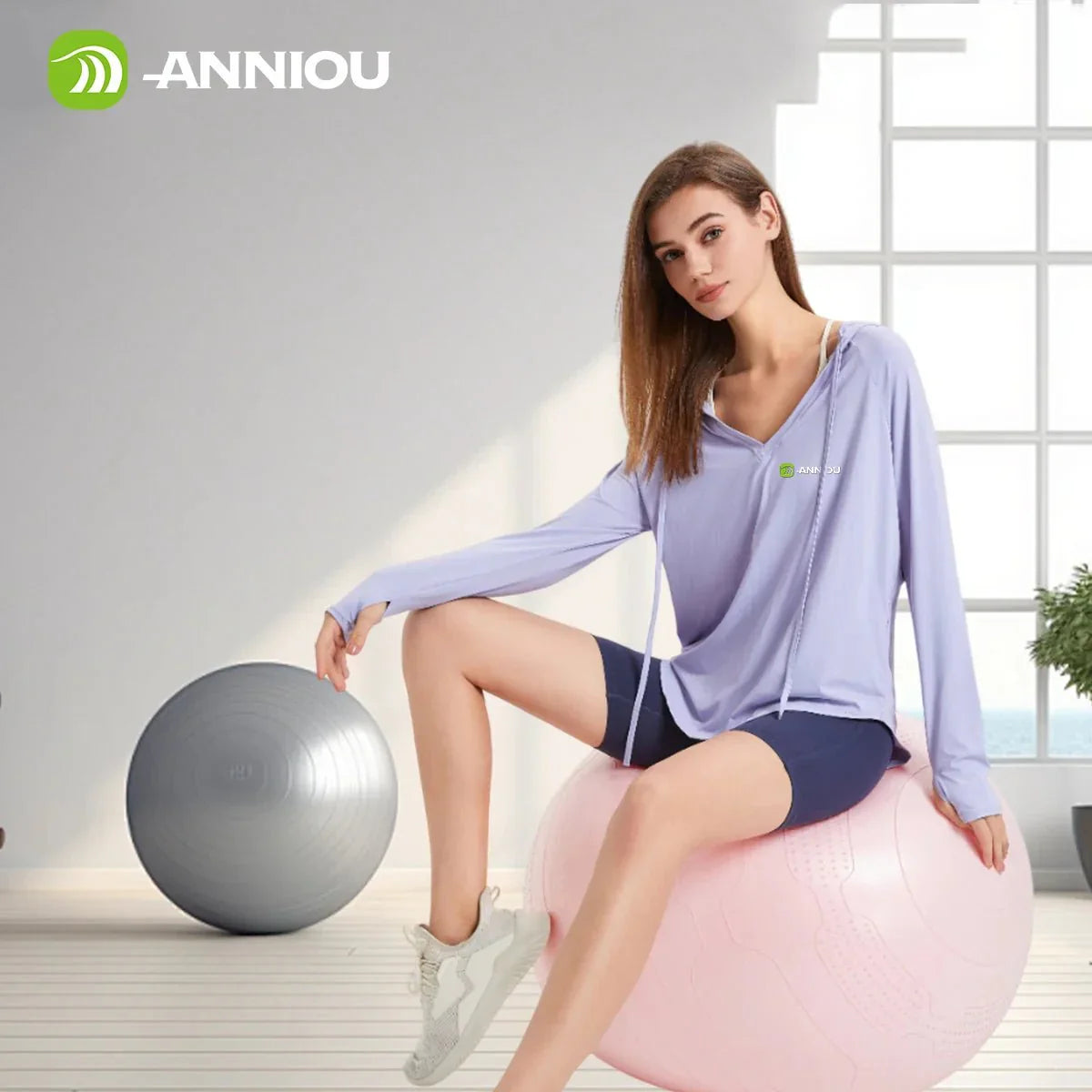The Best Colors for Sun Protective Clothing

Planning a beach day or hiking adventure? As you scan your closet, you might wonder whether that bright white t-shirt or deep navy polo offers better protection from the sun's harmful rays. The answer might surprise you—color plays a crucial role in how well your clothing shields you from ultraviolet (UV) radiation.
While sunscreen remains your first line of defense, sun protective clothing provides an additional barrier that doesn't wear off or need reapplication. Not all fabrics offer equal protection, and the color you choose can make a significant difference in your UV safety.
Understanding which colors work best can help you make smarter wardrobe choices for outdoor activities. From the science behind UV absorption to practical shopping tips, this guide covers everything you need to know about selecting the most protective colors for sun-safe clothing.
Why Sun Protective Clothing Matters
UV exposure poses serious health risks that extend far beyond temporary sunburn. Prolonged exposure to harmful ultraviolet rays accelerates skin aging, causing wrinkles, age spots, and leathery skin texture. More critically, UV radiation is the primary cause of skin cancer, which affects millions of people annually.
Clothing acts as a physical barrier between your skin and dangerous UV rays. Unlike sunscreen that absorbs or reflects UV radiation chemically, fabric provides mechanical protection that doesn't break down over time or wash away with sweat.
The effectiveness of sun protective clothing is measured using the Ultraviolet Protection Factor (UPF) rating system. Fabrics with UPF 50+ ratings block at least 98% of UV rays, making them incredibly effective at preventing skin damage. This protection level rivals the strongest sunscreens while offering consistent coverage throughout the day.
Quality sun protective clothing maintains its protective properties wash after wash, making it a reliable long-term investment in your skin health.
Understanding UPF Ratings
UPF measures how much UV radiation penetrates fabric to reach your skin. Think of it as the clothing equivalent of SPF ratings for sunscreen, though the measurement systems differ slightly.
The UPF rating scale breaks down into three categories:
- UPF 15-24 (Good Protection): Blocks 93.3% to 95.9% of UV rays
- UPF 25-39 (Very Good Protection): Blocks 96.0% to 97.4% of UV rays
- UPF 40-50+ (Excellent Protection): Blocks 97.5% to 98%+ of UV rays
Several factors influence a fabric's UPF rating, including fiber type, weave tightness, fabric weight, and moisture content. However, color plays an equally important role that many people overlook when selecting protective clothing.
The Science Behind Color and UV Protection
Color affects UV protection through the physics of light absorption and reflection. Darker and more vibrant colors absorb more UV radiation, preventing it from penetrating the fabric and reaching your skin. Lighter colors tend to reflect UV rays but still allow a significant portion to pass through the fabric fibers.
Research shows that color choice can impact UV blocking ability by 10-20% or more. This difference becomes especially important during extended outdoor exposure or high-intensity UV conditions.
The dyes used to create fabric colors also contribute to UV absorption. Certain dye molecules are particularly effective at absorbing ultraviolet light, enhancing the natural protective properties of the base fabric. This is why identical fabrics in different colors can have dramatically different UPF ratings.
Synthetic dyes generally provide better UV protection than natural dyes, and fade-resistant treatments help maintain protective properties over time.
Best Colors for Sun Protection
Dark colors consistently offer superior UV protection. Black fabric typically provides the highest level of protection, absorbing the vast majority of UV radiation before it can reach your skin. Navy blue and dark red follow closely behind, offering excellent protection for outdoor activities.
Bright, vivid colors also perform exceptionally well. Royal blue, deep purple, and emerald green absorb UV rays effectively while offering more color variety than basic black. These vibrant shades work particularly well for athletic wear and children's clothing.
The key principle remains consistent: colors that appear rich and saturated generally absorb more UV radiation. When shopping for sun protective clothing, prioritize deep, intense colors over pale or washed-out alternatives.
For maximum protection, look for garments that combine these optimal colors with high-UPF fabric construction and appropriate coverage.
Worst Colors for Sun Protection
Light colors provide the least effective UV protection, though they're not entirely without merit. White, pastels, and beige reflect some UV rays but allow significant amounts to penetrate the fabric and reach your skin.
White clothing, while popular for hot weather due to its cooling properties, offers minimal UV protection on its own. Light yellow, pale pink, and cream colors fall into similar categories for protection levels.

However, light colors can still fit into a sun-safe wardrobe when used strategically. High-UPF light-colored fabrics exist, proving that advanced fabric treatments can overcome color limitations. Additionally, layering light colors over dark, protective base layers combines style preferences with safety requirements.
Other Factors That Affect Sun Protection
Color is just one piece of the sun protection puzzle. Several other factors work together to determine how well clothing shields your skin from harmful UV rays.
Fabric type significantly impacts protection levels. Tightly woven synthetic fabrics like polyester and nylon generally block more UV rays than loosely woven natural fibers such as cotton and linen. The tight weave creates fewer gaps for UV light to penetrate.
Fabric weight matters considerably. Heavier, denser fabrics provide better protection than lightweight alternatives. You can test this by holding fabric up to a light source—if you can see light through the fabric, UV rays can penetrate it too.
Moisture affects protection in surprising ways. Wet clothing often provides less UV protection because water can make fabric fibers swell and create larger gaps, or make the fabric more transparent to UV radiation. This is particularly important to remember during swimming or sweaty outdoor activities.
Proper fit enhances protection. Loose-fitting garments offer better coverage and air circulation than tight clothing. Stretched fabric becomes thinner and more transparent, reducing its protective capabilities.
Tips for Choosing Sun Protective Clothing
Start by looking for clothing specifically labeled with UPF ratings. UPF 50+ garments provide the highest level of protection and are ideal for intense sun exposure activities.
When possible, choose darker or brightly colored garments, especially for extended outdoor adventures. These colors work particularly well for hiking shirts, beach cover-ups, and athletic wear where sun protection is paramount.

Prioritize long sleeves, wide-brimmed hats, and full-coverage designs that minimize exposed skin areas. The more skin you cover with protective fabric, the better your overall sun safety.
Consider moisture-wicking, breathable fabrics that keep you comfortable in hot weather while maintaining protection. Modern technical fabrics offer excellent UV protection without sacrificing comfort or style.
Don't overlook important accessories in your sun protection strategy. UV-blocking sunglasses protect the delicate skin around your eyes, while UV-resistant umbrellas provide portable shade for beaches and outdoor events.
For those who prefer lighter aesthetics, try layering light colors over high-UPF dark base layers or undershirts. This approach combines visual appeal with practical protection.
Your Color-Smart Sun Safety Strategy
The evidence is clear: darker and vibrant colors in well-constructed, high-UPF fabrics offer superior sun protection compared to light-colored alternatives. This knowledge empowers you to make informed decisions about your outdoor wardrobe.
Remember that sun protective clothing complements sunscreen rather than replacing it entirely. For complete protection, combine quality protective clothing with broad-spectrum sunscreen on exposed areas and seek shade during peak UV hours.
Take time to evaluate your current outdoor wardrobe and identify opportunities to add sun-smart pieces. Whether you're planning a tropical vacation or simply want better protection for daily activities, the right color choices can significantly enhance your skin safety.
Your skin will thank you for making these thoughtful choices, and you'll feel confident knowing you're taking proactive steps to prevent sun damage while enjoying your favorite outdoor activities.



0 comments